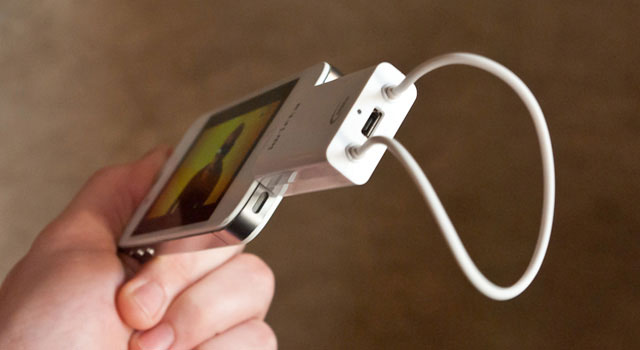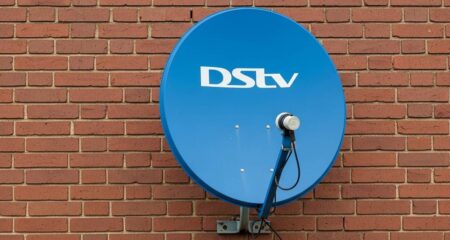
MultiChoice has updated its DStv Mobile TV offering with a new piece of hardware designed for Apple’s iPod, iPhone and iPad devices. The appropriately named iDrifta offers users up to 15 channels and uses the “digital video broadcasting handheld” broadcast technology so no data charges are incurred when using the service.
The iDrifta unit is roughly the size of a matchbox, weighs just under 20g, and includes a micro-USB port for charging, a 30-pin connector and a soft antenna. The unit’s battery lasts approximately three-and-a-half hours on a charge but will draw power from the device to which it is connected thereafter.
In order to use the iDrifta unit, users need to download the DStv Mobile Decoder application from Apple’s App Store.
Because the iDrifta uses a 30-pin connector, it isn’t possible to charge the device you are using and use the iDrifta simultaneously. Furthermore, plugging the iDrifta into a micro-USB charger or cable will charge it, but not the device to which it’s connected.
The first generation of Drifta used Wi-Fi to stream video to devices, making it compatible with a wider range of hardware. However, the new one benefits from being far more compact and having a considerably more compact aerial that is less prone to damage.
Also, because the iDrifta doesn’t require Wi-Fi, you can maintain an Internet connection during use and will get notifications as you usually would, which isn’t the case with the original Drifta. However, the iDrifta doesn’t allow for multi-tasking, so if you switch to another application, the broadcast will stop and you’ll have to reconnect to continue receiving a broadcast.
The resolution of DStv Mobile is 320×240 pixels, which is tolerable on an iPhone or iPod, but less than ideal on an iPad. There is the option to expand the picture to fill the screen of the device, but this results in further picture degradation. This is, however, a product of the mobile broadcasting technology and can’t be helped.
Due to licensing restrictions, the iDrifta won’t work with jail-broken devices and pops up a warning message should you connect it to such a device.
When connecting the device for the first time, the application will search for available channels, a process that takes two to three minutes. Users need complete the process only once. Thereafter, opening the application will produce a list of available channels immediately. Connecting to a channel — or switching between them — takes around 10 seconds each time.
The app itself is very easy to use. Tapping on a channel in the list opens it, tapping the screen in a particular channel brings up information on it and there’s the ability to scroll between text descriptions of other channels as well as switch between them. Users can also opt to expand the image to fill the screen.
The settings menu contains information about the firmware version of the device, the version of the mobile decoder application, the amount of battery remaining on the device, and signal strength.
The channels on offer are M-Net Series (Mobile); Sony Max; Idols Extra; Channel O; Discovery; SuperSport 1, 2, 4 and 6 and Blitz; eNews Channel; CNN Mobile; Cartoon Network; and Big Brother Africa.
Coverage is limited to SA’s larger cities and metropolitan areas, so those looking to keep abreast of the sport while visiting game parks or while on the road will be disappointed.
On the whole, the product is simple to use and does what it says on the box. However, it’s a pity there isn’t the possibility of a better resolution image and also unfortunate that the connection needs to be re-established each time you switch between applications.
The service is free to DStv Premium subscribers until the end of March 2013. For other DStv subscribers and non-subscribers, the service costs R49/month. — (c) 2012 NewsCentral Media




